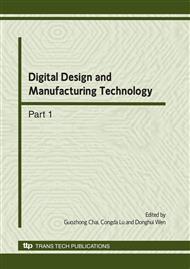p.583
p.587
p.591
p.595
p.600
p.605
p.610
p.615
p.620
Tool Wear Image Segmentation Based on Markov Random Field Model
Abstract:
In this article, we propose a tool wear image segmentation algorithm based on Markov Random Field model. In this algorithm, the wear area was divided into wear area, background area and body area, in terms of the MAP (maximum a posteriori) criterion, and we got the pre-segmentation image. Afterwards, the aiming area (region B) was segmented out from the wear area by using peak-band algorithm and the edges are integrated in mathematical morphology theorem. As a result, we obtained an integrated tool wear region. Experiments indicate that the segmentation algorithm can be used to evaluate the degree of tool wear and applied to synchronously monitor tool wear condition effectively.
Info:
Periodical:
Pages:
600-604
Citation:
Online since:
March 2010
Authors:
Price:
Сopyright:
© 2010 Trans Tech Publications Ltd. All Rights Reserved
Share:
Citation:


